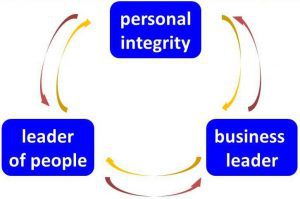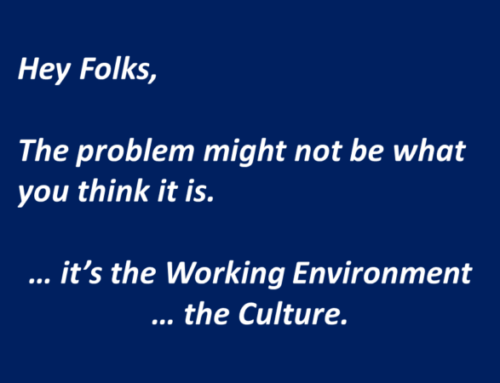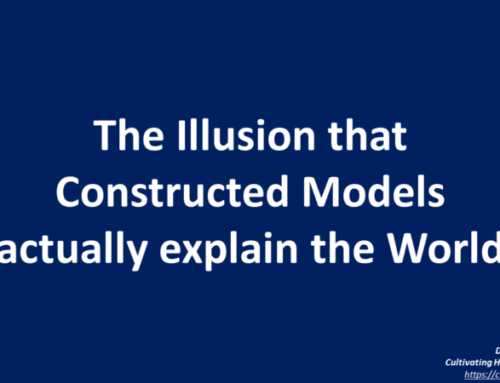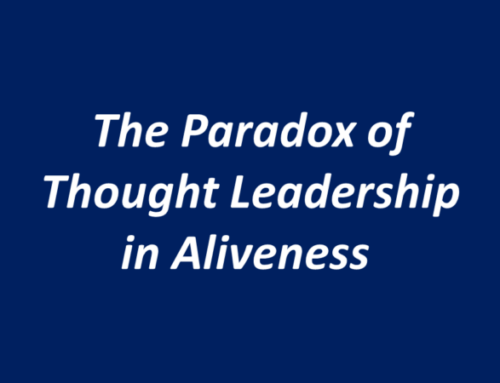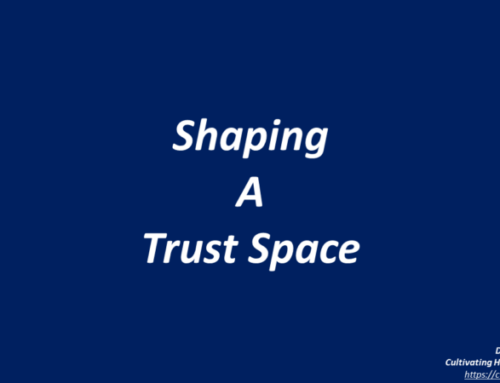Leadership is Collective and Exists in the Space In-between
Leadership – It’s a perennial topic and one that is likely to be so for as long as most of us live. It consumes us in social, political, organisational and family life. It divides opinion. It incites emotion. It affects all of us.
It’s important.
We need to develop our understanding of the dynamics of leadership in order to improve our lives.
I used to think I understood Leadership.
I have since discovered that it’s far more nebulous and messy than I could ever imagine. And I’m happy to still be learning.
Here, I will question the conventional paradigm of leadership, briefly present examples of how my work with groups has taught me to revisit my understanding of this concept, and finally, suggest an alternative way to work with Leadership that might help us get to the roots of some of the critical problems facing organisations and society. This suggestion owes a great deal to publications and recent conversations with Nora Bateson, and combines my learnings from developing and using cultureQs, with my understanding of the Batesonian view of complexity.
It’s incomplete. Like life, the work is in transition.
So …
What does this word „Leadership“ mean?
What is Leadership?
And, so what?
A Google search for „leadership“ this morning gave me over 800 million hits. A search in Amazon for leadership books produced 190,000 results. (I didn’t open any of them.)
And this tells us …? Apart from the rather banal conclusion that a lot of people are writing about leadership, it does indicate that there is likely to be a huge range of perspectives on this important concept, a conclusion which many of us can probably draw anyway from our personal experiences, everyday conversations and regular reading. And how could it be otherwise?
From what we know of human history in the 200,000 years that people have been on our planet, we can identify numerous patterns of leadership in humans and the animal kingdom.
Conventional history teaches us that for millennia, empires and kingdoms have been led by one person, whose power comes either from divine right or battle. Organised religions throughout the world have always reinforced this image, which politicians have been happy to mirror. It’s therefore natural for organisations that emerge from the power dynamics of society to also reflect such a dominant dominance model.
Endless streams of books, articles, blogs and social media posts regularly offer advice on the 5 (or 7 or 10 or 12 or …) ways to best lead a team or company. Such lists are of course purely reductionist: there is no right/perfect/optimal/best way to lead. How could there be? Like everything in life, appropriate action at any one time is situational. Our more complex problems, including people-related challenges , are not subject to the cause-effect loop .
And when we speak about „Leadership“ in organisations, what do we mean?
Are we talking about leading other people?
Are we talking about leading the business?
Are we talking about leading ourselves?
Are we talking about leading a combination of the above?
When I facilitate Corporate Leadership Development programmes, I take care not to refer to any of the above in isolation. It makes absolutely no sense as none exist in isolation. It’s the combination that is relevant, in the context, as well as the multiple additional influencers that we often cannot even know. Our world is complex and continuously changing.
While developing a leadership programme for an international group of senior project managers, I formulated this rather simple model as a support. It’s incomplete of course, yet, when we start to look in detail at what each of the headlines entail, it does help to illustrate some of the following characteristics of the leadership role:
- Leadership is a paradox.
- It’s a juggling act.
- Leaders invariably face dilemmas.
- It’s never possible to make decisions with complete information – the concept of completeness here is simply a fallacy.
- It invariably requires working with different, often conflicting interests.
- Don’t be surprised when faced with double-binds.
- There are always multiple perspectives.
- The leadership space is complex and dynamic. It’s unpredictable.
So, where’s the leadership?
It’s in the space in-between the elements. It can’t be anywhere else. This neither means that it’s in the middle, nor does it infer any kind of compromise. It illustrates the necessity to move beyond the edges of conventional patterns and labels to find where and how meaningful leadership exists.
And this has huge consequences for everyone holding a formal leadership role.
Ascertaining Multiple Perspectives of Leadership
When working with groups, whether I am holding a nominal leadership position, or as a facilitator/coach/consultant, where do we start?
We start of course, just where we all are right now.
There’s nowhere else we can possibly start.
And this means discovering initially where everybody else in the group is.
Here are two examples illustrating how I started a process to enable groups to reconsider conventional approaches to and their beliefs about leadership.
The first example is from work with a group of small business owners and senior employees in Germany. The focus was on establishing a framework for leadership that would be accepted by all members of their organisation.
As a first step, Each person completes the sentence: „Leadership is …“
The second example is from an assignment with the multicultural Senior Management Team of an international corporation, who not only needed to establish principles of cooperation among themselves, but also needed to be consistent while working with the multinational teams on multiple sites that reported to them.
They were asked to describe „My Role as a Leader“. As they talked, a facilitator visualised while checking for understanding.
  |
Where’s the Leadership?
While the individual answers and comparisons may in themselves be interesting, the main point here is the variety of perspectives. They indicate the complexity of the system in the room. They indicate the fallacy of the one-size-fits-all approach. They are, potentially, a resource.
From here, in each case, we began to develop the concept of leadership as a collective phenomenon. If we assume that the idea of leadership in any group is to lead towards some desired outcome, then, this range of perspectives indicates that no one predetermined approach can succeed: the desired outcomes can only be achieved if all perspectives are taken seriously and all parties are working together.
All are leading … together. How? Well, this is the challenge for groups to define themselves. Nobody else can. And of course, they may decide to adapt their approach along the way.
How do they find an approach suitable for them in their specific context? They answer the Question, „How are we going to work together while focusing on achieving our outcomes?“
They work in the space in-between. Again, this space can only be generative if there is no compromise, no assimilation. The space contains the collective intelligence of the group, intelligence which can only emerge if it is permitted space to breath. It’s a dynamic space: all elements of the system are learning. While there is no apparent order, even though we may not be able to see or define it, there is an order in the chaos.
While writing, I’m recalling a challenging assignment I worked on some years ago in a heavy engineering manufacturing plant. The environment was highly toxic, with visible distrust between management and employee representatives, the company and customers, the company and suppliers, between the corporate divisions. Production processes were inefficient, losses were heavy, closure of this signature plant was a distinct possibility. A new management team proposed changes including new working practices. To add more spice, the external process consultants, while technically competent, were acting like a bunch of arrogant dickheads: nobody trusted them. The challenge: How could we make it possible for all parties to agree to the new processes and work constructively to implement them? Nobody had an answer. Tension was high. We found a way, slowly. The answers were in the space.
What Does this Mean for Leadership?
When I first started working with this approach some 20 years ago, I was conscious of, while not completely aware of the significance and impact of this space. All I had was my intuition. I had only a very basic sense of systemic theory without any real understanding. I was unaware of Gregory Bateson’s work, unaware of Joseph Campbells’s work and just beginning to read David Bohm and Krishnamurti. As founder and owner of a small company with permanent and freelance staff, I was experiencing the challenges of leading people a business and myself; I was aware of the significance of leadership, but not in a position to formulate my thoughts clearly. As I began developing cultureQs in the early 2000s, I was still at an early stage of understanding how „space“ works.
And, having discovered that creating space for groups to interact freely was an extremely effective way to overcome differences in perspective that were hindering collaboration in groups, I just continued. Clients liked it. It felt right. Regardless of the theme; regardless of the size and make-up of the group – I have used this with groups as small as 5 and as large as 100, monocultural and multicultural, throughout Europe, in North America and in Asia; inviting the individual perspective will always generate a variety of views, which itself presents the potential for generative work in solving challenges – together – in any society or group.
We need a new paradigm of Leadership: one that moves away from the hero model towards leadership as a collective phenomenon. It requires recognition of the rudimentary human admission: „I don’t know“. Then, we might be able to discover. It requires the creation of a space, which is simultaneously … a space of mutual learning, a space of discovery, a trust space, a dialogue space, an emergent space. It’s an analogue space, messy, intermeshed, nebulous, undefinable, always changing. Everything inside is interconnected, interdependent and interrelated. And everything inside the space is connected with everything outside it too.
The answers to our critical organisational problems, society problems, environmental problems, and more are in the space between the elements of the system.
Ready-made answers do not exist.
We have to work together to discover them.
This is leadership.
References:
Here is a small collection of the works that are influencing my thinking on leadership and space. It’s work in progress and always will be.
There are too many conversations and experiences to mention, and I probably couldn’t recall them all even if I tried.
Gregory Bateson, Steps to an Ecology of Mind: https://www.amazon.de/Steps-Ecology-Mind-Anthropology-Epistemology/dp/0226039056/ref=sr_1_1?s=books-intl-de&ie=UTF8&qid=1498502438&sr=1-1&keywords=gregory+bateson
Nora Bateson, Symmathesy: https://norabateson.wordpress.com/2015/11/
Nora Bateson, Leadership within the Paradox of Agency: https://norabateson.wordpress.com/2017/01/19/leadership-within-the-paradox-of-agency/
Nora Bateson, Warm Data: https://norabateson.wordpress.com/2017/05/28/warm-data/
Fritjof Capra and Pier Luigi Luisi, The Systems View of Life: https://www.amazon.de/Systems-View-Life-Unifying-Vision/dp/1316616436/ref=sr_1_1?s=books-intl-de&ie=UTF8&qid=1498502676&sr=1-1&keywords=fritjof+capra
David Bohm, On Dialogue: https://www.amazon.de/Dialogue-Routledge-Great-Minds/dp/0415854709/ref=sr_1_2?s=books-intl-de&ie=UTF8&qid=1498502491&sr=1-2&keywords=david+bohm
Joseph Campbell, The Hero with a Thousand Faces: https://www.amazon.de/s/ref=nb_sb_noss_1?__mk_de_DE=ÅMÅŽÕÑ&url=search-alias%3Denglish-books&field-keywords=joseph+campbell
Max De Pree, Leadership Jazz: https://www.amazon.de/Leadership-Jazz-Revised-Essential-Elements-ebook/dp/B001FA0KMW/ref=sr_1_1?s=books-intl-de&ie=UTF8&qid=1498502550&sr=1-1&keywords=max+de+pree
John Heider, The Tao of Leadership: https://www.amazon.de/Tao-Leadership-Tzus-Ching-Adapted/dp/1623860199/ref=sr_1_2?ie=UTF8&qid=1498502575&sr=8-2&keywords=john+heider
Krishnamurti, On Relationship: https://www.amazon.de/Relationship-Jiddu-Krishnamurti/dp/0062506080/ref=sr_1_1?ie=UTF8&qid=1498502608&sr=8-1&keywords=krishnamurti+on+relationship
You can download this blog as a pdf here: Leadership is Collective

